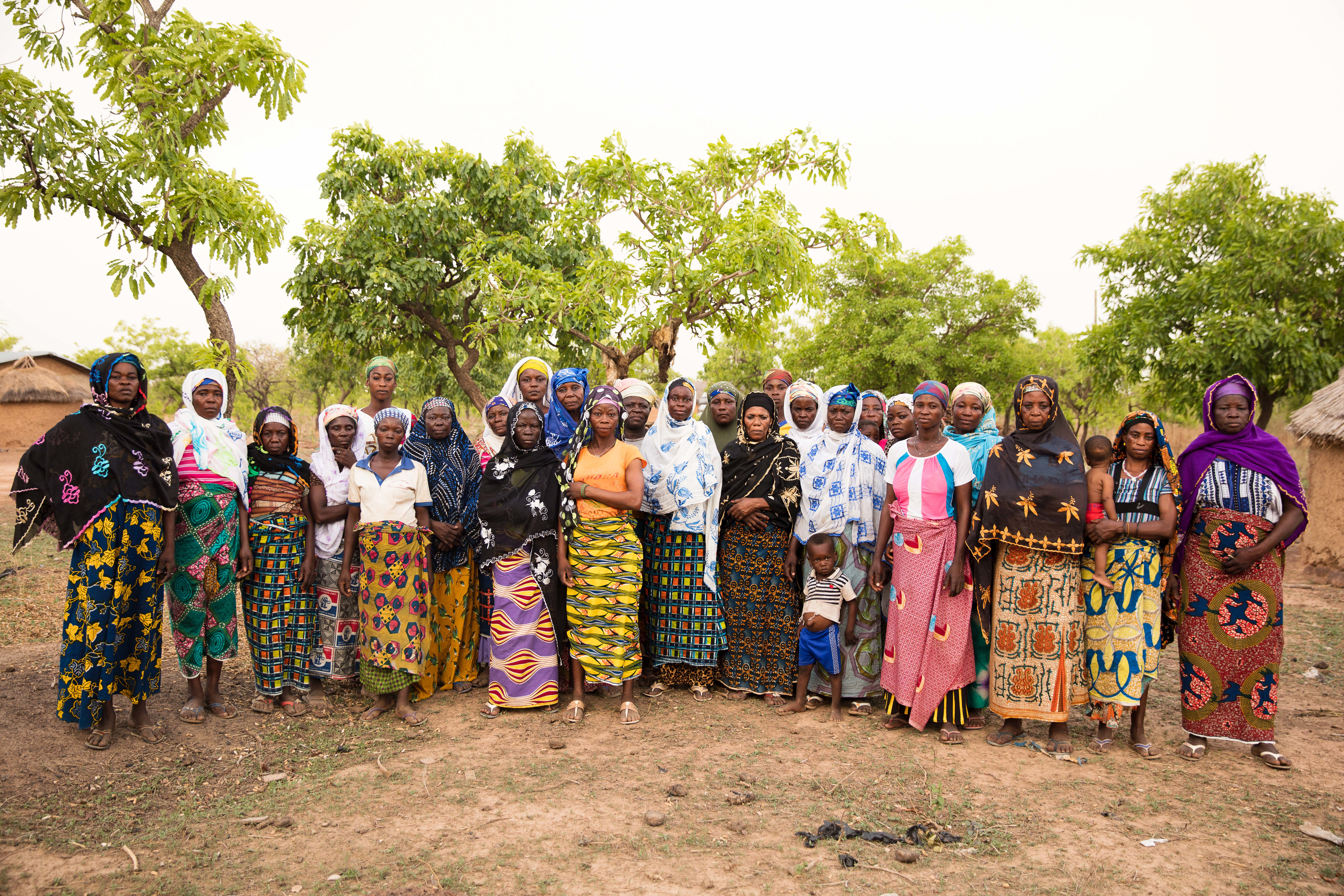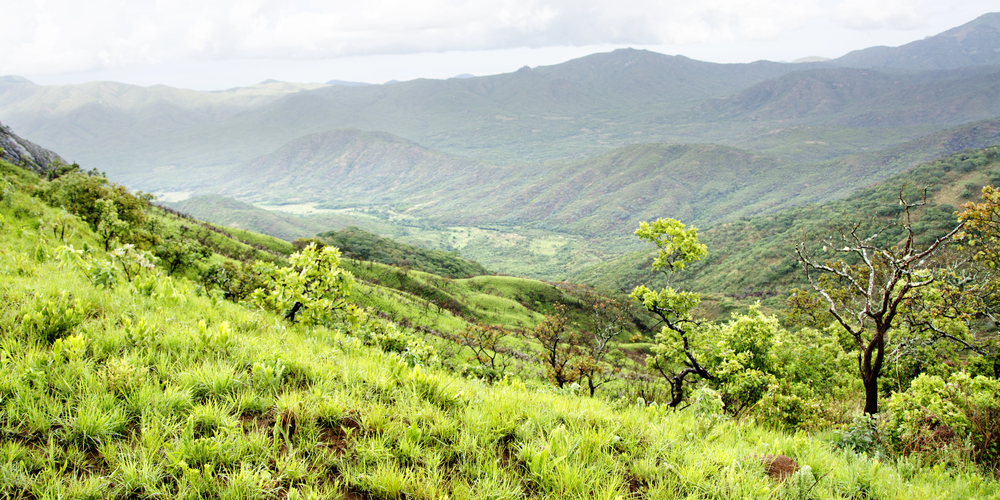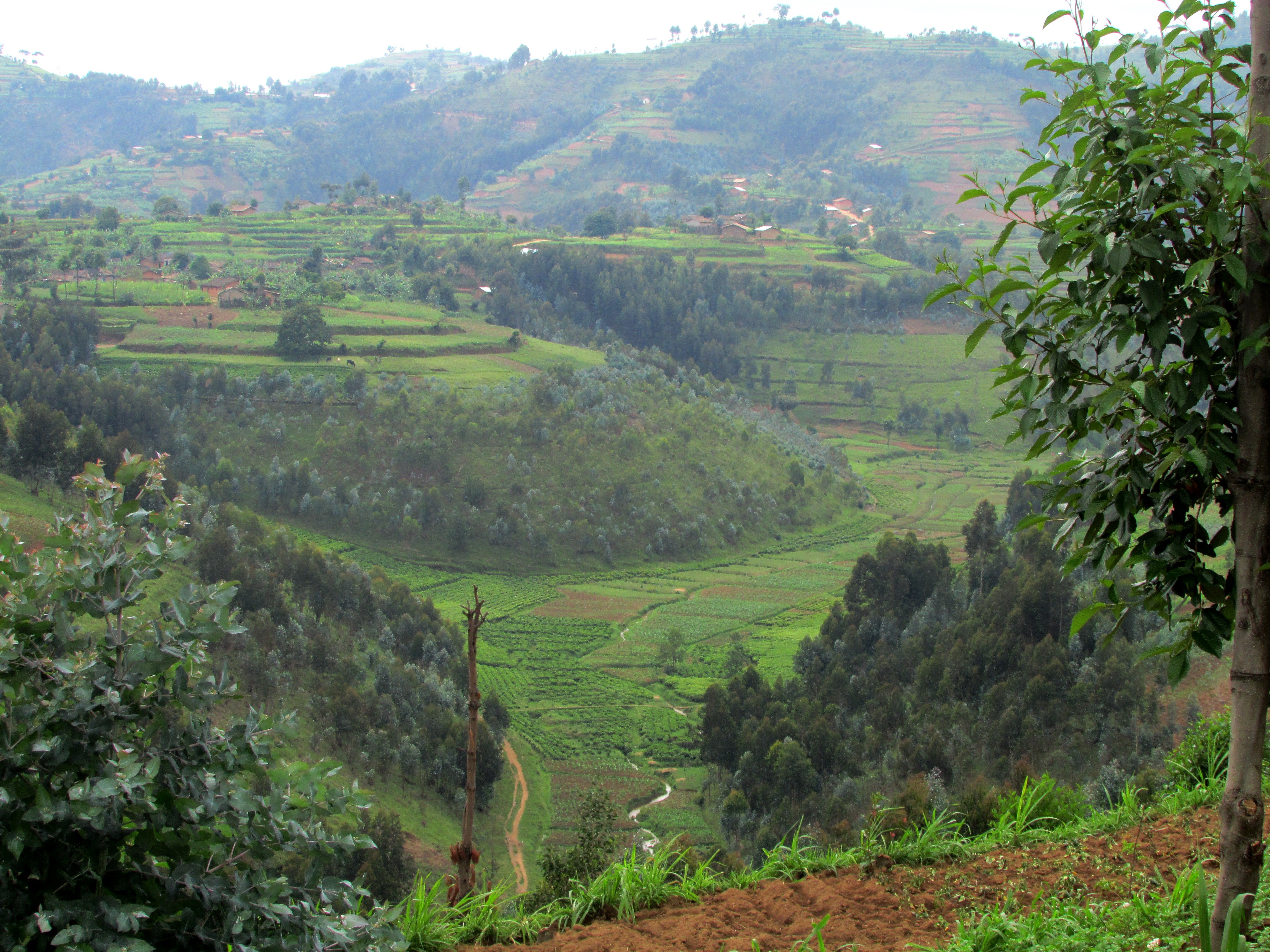tree-based systems

Food and forests: We can have them both
Agriculture provides most of the world’s food. It also contributes the most to global deforestation.![]() This does not mean, however, that we need to choose between feeding a rapidly growing population and protecting the forests that are so essential to our wellbeing.
This does not mean, however, that we need to choose between feeding a rapidly growing population and protecting the forests that are so essential to our wellbeing.
While many countries have first depleted their forests before seeing a rebound in tree cover, this “business-as-usual” scenario is not inevitable.![]() But changing it does require a paradigm shift. In part, it means redefining what “successful” pathways to sustainable development look like, so that they resonate with local leaders and reflect local realities – and thus gain political support. In addition, transitioning away from the status quo depends on forming new and creative partnerships between companies, communities, governments, and investors.
But changing it does require a paradigm shift. In part, it means redefining what “successful” pathways to sustainable development look like, so that they resonate with local leaders and reflect local realities – and thus gain political support. In addition, transitioning away from the status quo depends on forming new and creative partnerships between companies, communities, governments, and investors.
How to bring about this new food-and-forest paradigm? An ongoing study - funded by the Program on Forests (PROFOR) and led by the World Bank's Agriculture and Environment Global Practices along with experts from many agricultural and environmental organizations - is trying to find concrete answers. The team is focusing on six agricultural commodities: three that are heavily implicated in deforestation activities (palm oil, soy and beef), and three that could include planting trees in their cultivation (cocoa, coffee and shea butter). In an initial synthesis study, the researchers draw out some key lessons for removing deforestation from agricultural supply chains sooner rather than later, and for increasing the planting of trees in agricultural lands. Here are just six of their takeaways:
- Success starts with the farmer. There are many agricultural practices which, if implemented at scale, can benefit crop yields while slowing deforestation or increasing tree cover. Not only must farmers be fully equipped with this information, but they should be consulted and supported in making the transition to sustainable production systems.
- It is important to recognize and reward innovators. A system based entirely on punishing those who contribute to deforestation is unlikely to be effective in the long run. A more promising approach is to reward farmers who use creative, forest-friendly practices, while widely promoting the monetary and ecosystem benefits of these methods.
- Corporations’ sustainability pledges are important but not sufficient. A new and promising trend is the emergence of technical, commercial, and financial partnerships between companies, farmers, communities, and regional authorities.
- Government policies and programs need to be updated. In many cases, existing regulations prevent farmers from harvesting and marketing trees, deterring them from planting trees in agricultural landscapes. Ministries of agriculture and of environment need to work together to revise these legal frameworks so that farmers can sustainably grow and harvest trees on their lands.
- Regional action is critical. Efforts to combat deforestation in the agricultural sector sometimes fail because supply chains transcend national boundaries. Large-scale transformation is possible, but it needs to be backed-up by multi-stakeholder processes that lay out a shared vision for a region.
- The costs of forest loss need to be communicated more clearly. Forest conservation is often viewed through the lens of foregone agricultural profits. Governments should do a better job of communicating why forests are so crucial. For instance, improved management of shea trees in Sahelian countries could strengthen economic returns and ecological stability, with possible knock-on benefits like sustained income generation, jobs for women and youth, and lower incidence of conflict and migration induced by poor access to natural resources.
Initial findings from the synthesis study, “Leveraging agricultural value chains to enhance tropical tree cover and slow deforestation (LEAVES),” will be shared at the Global Landscapes Forum (GLF): The Investment Case in Washington, D.C. on May 30th. Its authors hope to start building momentum for their new approach to productive and sustainable agriculture.
“Although the private sector has been the main driver behind sustainability initiatives like Brazil’s Soy Moratorium and Cattle Agreement, support from the World Bank was instrumental,” said Dora Nsuwa Cudjoe, Senior Environmental Specialist, and Co-Task Team Leader of the LEAVES knowledge product at the World Bank. “The Bank can show the same level of engagement in the agroforestry commodities like coffee, cocoa, and shea, to help scale up private sector efforts. The opportunity is here.”
Photo: Josephhunwick.com
For stories and updates on related activities, follow us on twitter and facebook , or subscribe to our mailing list for regular updates.
Last Updated : 06-16-2024

When thinking of forests, don’t forget the value of trees
Across the globe, demand for wood products is increasing and expected to quadruple by 2050. This trend is exacerbating deforestation and forest degradation. But it also presents an opportunity for a better approach to farming and managing forests.
A new report, Harnessing the Potential of Private Sector Engagement in Productive Forests for Green Growth, shows how sustainably harvesting wood products can help meet growing demand while providing jobs, mitigating climate change and conserving primary forests.
While it’s well known that trees and forests provide an important carbon sink, the carbon stored in forest products is often overlooked. Forest products and materials such as those used for construction and furniture store carbon for decades and even centuries.
Choosing wood products over other non-renewable materials, such as concrete and steel for construction materials, also offers climate benefits. Concrete and steel require fossil fuel to produce, making these alternatives much more carbon intensive. For example, producing a concrete wall puts 15 times more carbon dioxide into the atmosphere than making a wooden one.
The new report, funded by the Climate Investment Funds (CIF) and the Program on Forests (PROFOR), examined the economies of six countries - Ethiopia, Colombia, Mexico, Mozambique, Peru and Vietnam - to estimate the potential climate mitigation benefits from forest-based supply chains. Together, the six countries could sequester more than 150 million tons of CO2e (see table below) by 2030 with adequate investments in forest restoration and the increased production and use of wood products. Such an approach could help countries meet their climate commitments under the Paris Climate Agreement.
Investing in wood supply to meet demand through landscape restoration and other means also brings benefits, especially by creating new forest industry jobs in rural areas. Potential employment benefits in the six countries studied are depicted in the table below. In addition, projected demand for wood products could encourage the private sector to make long-term investments in productive forests, plantations, and wood processing.
Moving forward on sustainably harvesting forests is a delicate balance between production and conservation. If promoting forest products leads to deforestation, then climate mitigation is lost. To get the balance right, governments must create an enabling environment through better law enforcement and governance. That would help to protect and more sustainability use forests, improve land tenure, and provide the incentive mechanisms to attract private sector investments. Plantations will be key for renewable energy - sustainable charcoal and wood chips - in the future. Private investors, rural communities and forest owners also need technical assistance to help with forest management and production, as well as easier and quicker access to market information.
“Investing in sustainably managing and using forests offers longer-term benefits over the frequently under-productive and disorganized use of many forests today,” says Gerhard Dieterle, program manager for the World Bank’s Forest Investment Program. “As found in this study, doing so would unquestionably benefit people and the planet.”
Click here to watch the video on the interview with the authors.
For stories and updates on related activities, follow us on twitter and facebook , or subscribe to our mailing list for regular updates.
Last Updated : 06-16-2024

Think Big: Landscapes rich with trees deliver multiple benefits
Most development projects start out with a particular assumption about scale: the first order of business is to run a pilot to test a particular intervention, and then, if the results are promising, go on to duplicate the intervention to reach a greater number of people.
This assumption makes sense in a good number of situations – but not always. For a PROFOR-supported research team looking at the practice of growing trees on cropland, the logical approach actually started with thinking big.
As team leader and World Bank Sr. Natural Resources Economist Diji Chandrasekharan explained, “Instead of asking the question ‘what works and how do we scale it up?’ we wanted to ask, ‘what’s happening at scale and why?’ We wanted to find something that was already large, find out why, and how those conditions could be enabled elsewhere.”
The team’s study focused on Rwanda and Malawi, where Tree-Based Systems (TBS) are common on agricultural lands, although carried out in different ways. In Rwanda, agroforestry practices largely take the shape of farm woodlots, contour hedgerows, gardens, scattered trees in fields, and boundary-planted trees. Not only has agroforestry been practiced for centuries in Rwanda, but the government has a history of promoting such initiatives. In Malawi, thousands of hectares of cropland are under Farmer-Managed Natural Regeneration (FMNR), a low-cost technique to revive trees and shrubs, and thus improve soil fertility.
While TBS practices vary widely, they are generally linked to a range of economic and environmental benefits. First there is the ability of households to use trees for fuelwood, charcoal, timber, or as a source of income. Second, trees can boost agricultural productivity: a study in Malawi found that maize yields increased by 4-53 percent when the crop was planted under Faidherbia trees. In addition, trees on farms can act as an important carbon sink, sequestering greenhouse gas emissions even as forests around the world continue to be threatened. In Malawi, maize intercropped with G. sepium can result in the removal of 1.6 metric tons of carbon dioxide equivalent (CO2e) per hectare every year. These multiple benefits are crucial for Malawi and Rwanda. Not only do both countries have growing populations that rely overwhelmingly on agriculture for their livelihoods - which are increasingly vulnerable to the effects of climate change – but they have also committed to help mitigate CO2 emissions.
Yet for all of the advantages of TBS, the practice is not being adopted everywhere – so what is happening in Malawi and Rwanda to make it so widespread?
The team found that the likelihood of TBS being adopted depended on several factors, including the availability of agricultural extension services; access to tree seeds and seedlings; the existence and effectiveness of local bylaws promoting TBS; and the effectiveness of trees in enhancing soil fertility.
Equally interesting was the significance of collective action in promoting TBS. As Diji Chandrasekharan noted, “We need to find ways to go beyond putting in place the right policy environment and investing in the most efficient technologies. We also need to help build social capital by supporting the conditions under which village leaders can bring community members together and transfer technology through a collective mechanism.”
Based on their findings, the research team drew up recommendations for the governments of Rwanda and Malawi to further promote TBS. For instance, both Malawi and Rwanda could put their existing agricultural extension programs to work more effectively in promoting for trees on farms. In Malawi, there is a very clear economic case for expanding TBS: instead of subsidizing fertilizer to improve agricultural productivity, the government could save some $71 million annually by promoting the intercropping of trees in maize fields.
In addition, results from the studies will feed directly into country-level interventions, including the Forest Investment Program in Rwanda, and a new project being discussed in Malawi. More broadly, Diji Chandrasekharan hopes to raise greater awareness of the multiple benefits of TBS on agricultural and other landscapes, as well as the value of thinking – early on – about going to scale. “Our framework points to the importance of knowing what scale you want to reach right from the beginning, and then working backwards,” she said. “That requires a subtle difference in how we plan and design projects”
For stories and updates on related activities, follow us on twitter and facebook , or subscribe to our mailing list for regular updates.
Last Updated : 06-16-2024








